100–102 Newland Street, Witham, Essex, CM8 1AH
Formerly The Battesford Court Hotel, this 16th-century building was the court house of the manor of Battesford.
Text about the history of Battesford Court.
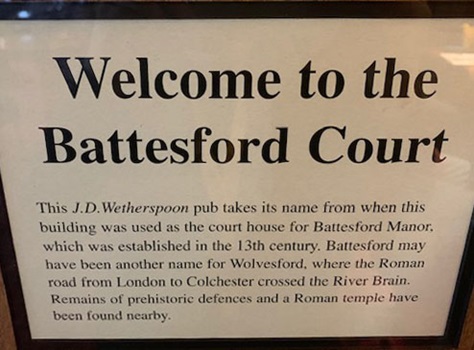
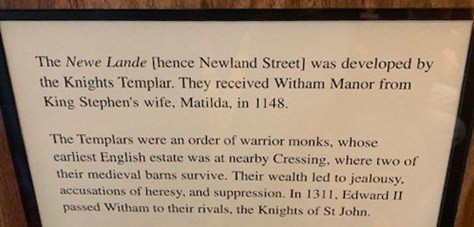
The text reads: This pub takes its name from when this building was used as the court house for Battesford Manor, which was established in the 13th century. Battesford may have been another name for Wolvesford, where the Roman road from London to Colchester crossed the River Brain. Remains of prehistoric defences and a Roman temple have been found nearby.
The Newe Lande (hence Newland Street) was developed by the Knights Templar. They received Witham Manor from King Stephen’s wife, Matilda, in 1148.
The Templars were an order of warrior monks, whose earliest English estate was at nearby Cressing, where two of their medieval barns survive. Their wealth led to jealousy, accusations or heresy, and suppression. In 1311, Edward II passed Witham to their rivals, the Knights of St John.
Text about the high society.
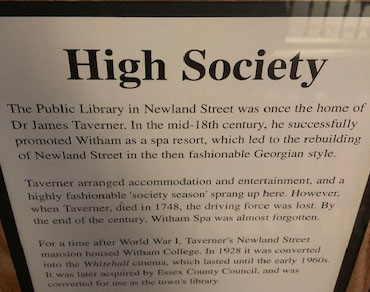
The text reads: The public library in Newland Street was once the home of Dr James Taverner. In the mid-18th century, he successfully promoted Witham as a spa resort, which led to the rebuilding of Newland Street in the then fashionable Georgian style.
Taverner arranged accommodation and entertainment, and a highly fashionable ‘society season’ sprang up here. However, when Taverner died in 1748, the driving force was lost. By the end of the century, Witham Spa was almost forgotten.
For a time after World War I, Taverner’s Newland Street mansion housed Witham College. In 1928 it was converted into the Whitehall cinema, which lasted until the early 1960s. it was later acquired by Essex County Council and was converted for use as the town’s library.
Text about Dorothy L Sayers.
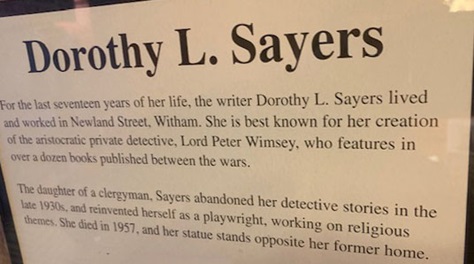
The text reads: For the last seventeen years of her life, the writer Dorothy L Sayers lived and worked in Newland Street, Witham. She is best known for her creation of the aristocratic private detective, Lord Peter Wimsley, who features in over a dozen books published between the wars.
The daughter of a clergyman, Sayers abandoned her detective stories in the late 1930s, and reinvented herself as a playwright, working on religious themes, and her statue stands opposite her former home.
Text about agriculture and industry.
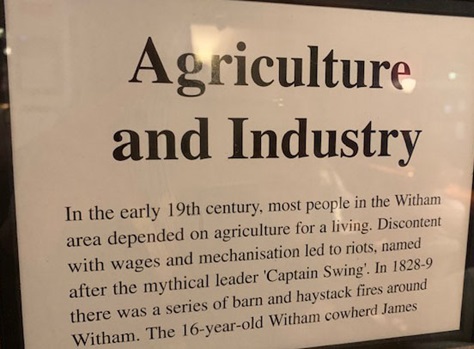
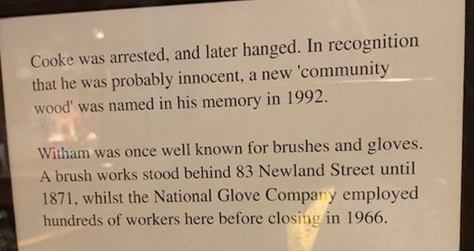
The text reads: In the early 19th century, most people in the Witham area depended on agriculture for a living. Discontent with wages and mechanism led to riots, named after the mythical leader Captain Swing. In 1828-9 there was a series of barn and haystack fires around Witham. The 16-year-old Witham cowherd James Cooke was arrested and later hanged. In recognition that he was probably innocent, a new ‘community wood’ was named in his memory in 1992.
Witham was well known for brushes and gloves. A brush works stood behind 83 Newland Street until 1871, whilst the National Glove Company employed hundreds of workers here before closing in 1966.
If you have information on the history of this pub, then we’d like you to share it with us. Please e-mail all information to: pubhistories@jdwetherspoon.co.uk